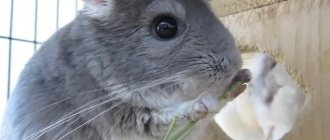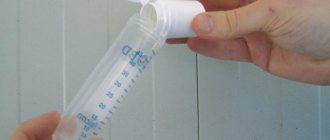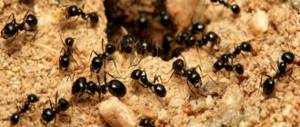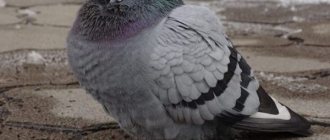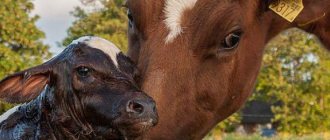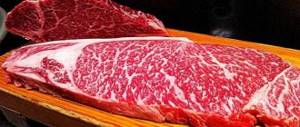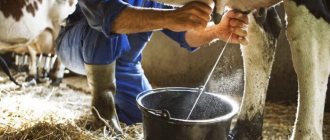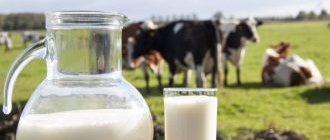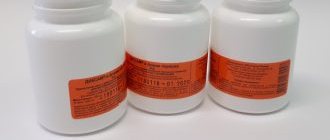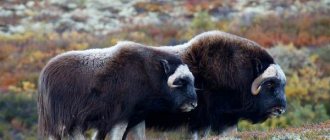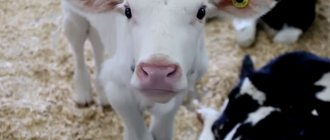- October 29, 2018
- Miscellaneous
- Elena Gnilitskaya
If you have your own farm and you have rabbits, cows, pigs, or you are a successful hunter who often brings home prey, you are probably interested in the question of how to properly tan the skin. Let's look at what types of skins there are and what they are used for. Is it possible to tan skins at home? What are the stages of the process and what tools are needed?
Kinds
Before considering the process of tanning hides at home, it is necessary to highlight their main types. The value of the material depends on the type of animal, its age and gender. Some skins are used for making clothes and are highly valued, others are suitable for household needs. In any case, it is worth practicing dressing first on less valuable species.
The following types of cattle hides are distinguished:
- opoek - skins of calves that have not had their first molt;
- outgrowth - the skins of calves that switched to plant food;
- semi-skin - skins of animals under two years old;
- goby – skins of young gobies;
- cowhide - skins of heifers and cows;
- bull - skins of castrated bulls:
- bugai - the skins of uncastrated bulls.
Horse skins are divided into the following types:
- foal;
- marking - young individuals;
- horse meat – adults.
Goat (goat) skins also vary depending on the age of the individual. Dairy goats have soft and delicate skins. When an animal switches to solid food, the skin becomes tougher. Mature bucks have rougher, thicker skin than female goats. Goat meat is also divided into steppe and grain.
Pork skins are obtained from domestic pigs, hogs, wild boars, and boars.
We list the types of fur that are most valued when sewing clothes:
- Sable fur is considered the most expensive. Due to the high price, fur is most often used for finishing products: collars, cuffs, hood.
- Marten fur is not as soft and fluffy as sable fur, but can be a cheaper alternative.
- Fox fur has a long pile. It is beautiful and very warm. The color can vary depending on the type of fox: red, cross, polar, silver, red, gray.
- Mink fur is very popular due to its softness. Males are larger than females and have longer fur.
- The fur of the Arctic fox is long, thick and warm. Used for sewing hats and trims. The Norwegian Arctic fox has the highest quality fur.
- Raccoon fur became popular after it began to be imported from North America. It is warm and has a beautiful color. Widely used for headwear.
- Otter fur is the most wearable. It is resistant to moisture. It is most popular for men's products; for women's it is used only after plucking.
- Nutria fur is often used to make fur coats. When plucked, it is very similar to mink fur. It has many color options: golden, silver, black, white, beige, cream, smoky.
- Muskrat fur is thick and silky. Used for sewing fur coats and finishing products.
- Beaver fur is quite heavy, and therefore is considered masculine.
- Ferret fur has a golden tint. Often used for hats and finishing products.
- Chinchilla fur is expensive and lightweight. It is soft and thick. Fur is sensitive to high humidity.
- Rabbit fur is the most inexpensive. The properties of fur depend on the breed of rabbit and the type of skin.
- The fur of Astrakhan sheep is soft, short and silky.
Let's look at how to tan a skin step by step. It is necessary to strictly adhere to all solution recipes to avoid deterioration in the quality of the fur.
Fatliquoring of hides
Tanned skins need to be fattened. Collagen fibers coated with tanning substances in the dermis must be covered with particles of fat, otherwise in a humid environment, as well as when washing fur, the tanning agent may be washed out, and when drying, the skins become coarser. Collagen fibers lubricated with fat slide and do not stick together, the oiled skin is elastic and stretches in all directions.
In production, industrial fat compositions are used for these purposes; there is a wide variety of such preparations. They have been tested by technologists in production and have good penetrating and lubricity.
The main component is animal fat (all domestic animals and birds) and liquid industrial oils (industrial, obtained from the processing of petroleum products: machine, spindle, transformer, vaseline).
There are two ways to fatten skins: dipping and spreading. The dipping method is more productive and is used in production. The disadvantage is the high consumption of emulsion. This work is done in containers and is often combined with tanning.
But tanning hides at home mainly uses the spread method. The fat emulsion is applied to the dermis with a brush, the consumption is small. Artisanal fat compositions have good performance in the preparation of rabbit skins and are readily used by home-based craftsmen.
To prepare such an emulsion, you can take 200 g of any animal fat, dissolve it in half a liter of boiling water, add 25 g of machine fat and 40 g of glycerin, and then add 200 g of chicken yolk. Mix the entire composition well, then use it for its intended purpose.
After tanning and curing, the rabbit skins are stretched, coated with fat, and after two hours hung out to dry.
Skinning
Before skinning, it is important to properly remove the skin from a killed animal. The hunted dead animal should be hung by its hind legs on a crossbar. You need to decide: is the skin with paws and a muzzle needed or is only the fur important? It is worth removing the trophy skin completely, because this way it will look more impressive. For removal, use rubber gloves and a very sharp knife. You can use a stationery knife, which is quite thin, convenient, sharp and does not need sharpening. Place plastic wrap under the carcass to avoid staining the surface.
Cutting the skin begins from the groin area. An incision is made and the skin is separated from the tissue by hand. You can help yourself with a knife. First, the skin is removed from the hind legs. The tail is pulled out from the skin, as if from a stocking. Next, it should be removed from the front paws. A circular incision should be made at the base of the skull. First, the skin must cool. At this time, you can clean the wool from debris and dirty spots. You need to scrape off any remaining pieces of meat and fat. The skin should be sprinkled with coarse kitchen salt and left like that overnight.
Next, let's look at how to tan the skin.
Finishing work.
Dried skins are kneaded and pulled in all directions. The trifle crumples well with your hands, you should not allow it to dry out. Dried skins will need to be moistened again. Larger skins can be pulled through a bracket, kneaded on a disk, you can sharpen one edge of the board and use this edge for kneading.
For large skins, use a wooden pulverizer. Rabbit skins are processed well at home and, when properly processed, are easily wrinkled by hand.
If you process a large number of skins, then you need mechanization - a sliding drum. It can be made from wooden boards or plywood sheets. The drum diameter is 1.5 meters, width 70 cm. To rotate, you will need a small electric motor and gearbox.
The optimal drum rotation speed is 30 - 40 rpm. There are partitions inside for capturing skins. To break down the skins, you need large pieces of car tires or river pebbles the size of oranges.
Skins and sawdust are placed in the drum. When rotated, the skins fall and, thanks to pieces of rubber, are kneaded. In a drum, you can clean the skins from fat; for this, a solvent (turpentine, white spirit, etc.) is added to the sawdust.
After this treatment, the skins need to be shaken free of sawdust either on a special mesh drum or on the same drum where a mesh is installed instead of a locking hatch.
Sawdust is used from deciduous species (oak, aspen, birch, beech). After breaking, the skins need to be given an aesthetic appearance; the dermis is sanded with sandpaper by hand or on a machine. After processing, the skins become even softer. Then the pile is combed out with a metal needle brush.
If you don’t have a retractable drum, it’s okay, dressing skins at home can be done without it, you can clean the skins by washing them in wool shampoos, you shouldn’t wash the skins immediately after dressing, you need to wait a while so that the fat from the fat emulsion lubricate the collagen fibers well, the skins should rest.
When washing, chemicals (tanning agent, salt) will be preserved to some extent and the skins will remain soft.
Preparation
During the processing of the hide, its area is reduced by approximately 20%. It is best to start dressing immediately after removal, but this is not always possible. Most often, hunters start this after the end of the season, and before that they store the material in a dry, well-ventilated area. You need to prepare the necessary equipment for tanning the skin. This is a long, flat surface that will allow the trophy to spread out nicely. It is also important to prepare gloves, ingredients for solutions, a container for soaking, scrapers and a brush. First you need to soak the skin. To do this, prepare a container and clean water. You need to mix a solution based on 5 liters of water, 250 g of salt, 2.5 g of any detergent, 3 furatsilin tablets.
Dressing rabbit skins at home: Instructions
For thin rabbit skins, you can apply the following processing scheme.
1) SOONING. Soaking freshly dry skins in a solution: take enough water at a temperature of 20-25 degrees so that the skins float freely in the container. The amount of salt is 30 g/l; to prevent the solution from rotting, add formaldehyde 40% - 1 g/l.
For better watering of the skin, you can use washing powder 1 g/l and 70% acetic acid 1.5 g/l. We trim off everything unnecessary on the skins: tails, paws and heads. Load into the solution and stir frequently. The skins will be soaked for 20 hours. The skins are then pulled out and pressed. Let's start the fleshing.
2) MESHING. We remove the remaining meat and fat from the dermis using a scythe, which is fixed to the bench. You can remove the meat film with your fingers, but this takes a long time; on a spit, it takes several minutes for an experienced master to churn the remaining meat. Finished clean skins are sent for washing (degreasing).
3) DEFEATING. We wash the skins in a washing machine, the old type, or by hand. We take the same amount of water at a temperature of 35 - 40 degrees as for soaking. The amount of washing powder for hand washing is 3 g/l, soda ash is 2 g/l. If the skins are oily, you can add FERI 1 g/l. We wash for 30 - 40 minutes. Then we wash the skins in plenty of warm water. Place the squeezed skins into a container with acid.
4) PICKING - TANNING. Pickling can be combined with tanning, thereby reducing the tanning time. The bath is being prepared: the same amount of water as when soaking, the water temperature is 28 - 29 degrees. The amount of sulfuric acid 5 g/l, salt 70 g/l, 6 g/l chrome tanning agent (chromium sulfate with a basicity of 30% - green powder), 7 g/l hyposulfite, 12 g/l aluminum alum.
The processing technology is as follows.
Salt is poured into water at a temperature of 30 degrees and acid is added. Load the skins. Tanning skins at home requires frequent mixing, so skins are often mixed. After 10 hours, hyposulfite is added. After 2 hours, pour in the first half of the dissolved chrome tanning agent and mix everything. After an hour, pour in the second half and stir again. After an hour, aluminum alum is poured in.
After four hours have passed, the skins are checked for drying; if the result is positive, the skins are removed, laid out in layers and left to lie in this position for 12 hours. Then the skins are split on a spit, stretched lengthwise and pulled over the rules.
The skins are fattened with fat emulsion, after 2 hours the skins are hung out to dry. As soon as the skins begin to dry out, they are crushed, broken, turned inside out and dried again. Dry and crushed skins are sanded, cleaned and fur combed.
Soaking
The next stage of dressing the skin is to soak it. For 1 kg of trophy it is worth preparing about 8 liters of solution. Furacilin and salt will prevent the growth of bacteria in the solution. The detergent removes dirt and softens. Before laying the skins, the solution must be moved very well.
For skins with short fur, you can use a little less solution, but for long pile, on the contrary, you need more liquid so that the fur does not get tangled. Do not try to straighten dry skins before soaking, otherwise they may break. The soaking process takes quite a long time. Periodically, the skins need to be stirred a little. If they are very dry, then they need to be taken out and straightened. Depending on the initial condition of the skins, the solution should be changed several times to a new one. Steamed skins (only removed) and soaked in salt should be soaked for about 2 days; well-dried skins should be soaked for at least three days. As soon as, with little effort, the hairs pop out of the skin along with the bulbs, the process can be considered complete. The skin needs to be squeezed out well.
Tanning hides at home: especially for beginners
The processing scheme for rabbit skins is as follows:
1) Soaking preserved skins.
To begin, select skins, preferably thin-flesh skins of young rabbits. Do not tan the thick skins of old males yet. Prepare the solution: take enough clean tap water (preferably soft) so that the skins can float freely in the container.
Water temperature 25 degrees. Dissolve salt 30 g/l - for freshly dry raw materials or 20 g/l for dry salted skins. Fresh skins that have just been removed from an animal (steamed) should not be dressed immediately by beginning furriers; during dressing, loose hair may appear on the skins. In order not to take risks, the skins should be trimmed (cleaned of fat and meat residues), stretched over the rules and dried.
Such skins can be dressed in 2 weeks. It is necessary to add some kind of antiseptic to the soaking solution so that putrefactive bacteria do not develop. 40% formalin 1 g/l is best, you can use tablets, 1 tablet of furatsilin per 1 liter of water.
If the skins have been stored for a long time and have dried out, then 1 - 2 g/l of washing powder for wool and 1.5 g/l of acetic acid can be added to the solution, this will help better hydrate the skins and make it easier to flay. Duration of soaking is 16 – 20 hours. Stir the skins frequently.
The skins must be thoroughly soaked, otherwise the dressing of the skins will be poor. Then the skins are wrung out and fleshing begins.
2) Fleshment.
You can clean the skins from any remaining meat and fat using a knife, stretching them onto a wooden rule; this is long and difficult. Can be done on the deck using a two-handed scraper. I recommend using a scythe attached to a bench for these purposes.
With certain skills, this work will take a few minutes. You need to peel off the skin well, pull off the muscular film with a stocking. The dermis must be completely cleaned, otherwise in those places where the film remains, the skin becomes rougher. The skins are then washed.
3) Washing (Degreasing).
It is necessary to degrease the skin, remove the fat that is inside the leather tissue, otherwise the penetration of chemicals in all liquid operations will be difficult. You can wash it in an old type washing machine or by hand.
Prepare the solution: Water can be taken as for soaking, at a temperature of 35 - 40 degrees. Salt 20 g/l, washing powder 2 - 3 g/l and soda ash 2 - 3 g/l. We wash for 30 – 40 minutes. Then rinse in warm water, wring out and put in a pickle.
4) Pickling.
Treatment of hides in acid and salt. Solution: water, the same amount as for soaking, temperature 28 degrees. We keep the temperature of the solution constant throughout the pickling process. Salts 50 g/l, acid 70% acetic 15 - 20 g/l (you can use sulfuric acid 96% - 5 g/l or formic acid 100% 8 - 10 g/l).
Stir the skins frequently. The duration of pickling is 16 – 24 hours, or more precisely determined by the appearance of “drying” on the skin. After this process is completed, we squeeze out the skins and lay them out in layers on a hill in a basin in a warm place of 18 - 20 degrees. Duration of storage is 20 – 24 hours. The skins are then neutralized.
5) Neutralization.
We will tan the skins with tannins, so we carry out neutralization after pickling. Remove acid using baking soda. Prepare the solution. Water temperature 25 degrees. Baking soda 2 -3 g/l, salt 20 g/l. Duration: 1 hour, stir the skins frequently.
6) Tanning.
We will tan the hides with vegetable tannins (tannids). Prepare the tanning agent: finely chopped branches, bark or sawdust (200 - 250 g/l) of willow, oak, spruce, wild rosemary are placed in a container, filled with water and boiled for 30 minutes.
Then cover and leave for several hours. The solution is decanted, filtered, salt 50–60 g/l is added, cooled to 25 degrees. The skins are loaded for 15–20 hours or even up to 2 days. The tanning agent must saturate the entire thickness of the dermis, it is checked on a cut of the skin, the cut is painted yellow. After tanning, the skins need to be fattened.
7) Fatliquoring.
Take glycerin and chicken yolk in a 1:1 ratio, mix well, get an emulsion, brush the skins using the rules without sparing the preparation, put them in piles, after 2 hours hang them out to dry.
 Drying and finishing operations.
Drying and finishing operations.
We dry the skins in warm weather in the air, and in cold weather in warm rooms or drying cabinets. The temperature should be sufficient, 35 - 40 degrees, but not higher. The skins should dry within a day but no more, during which time the emulsion should penetrate deep into the dermis.
When drying, the skins are constantly monitored; as soon as you see that they are drying, we remove them, crumple them, turn them inside out, dry them, and crumple them again. Be careful not to let the skins dry out, otherwise you will need to re-moisturize them. If the dressing is successful, the skins are soft and can be easily kneaded by hand. Dry skins are treated with emery cloth, the pile is cleaned and combed. The skins can be washed in wool shampoos, but not immediately, you need to let the skins sit for at least 2 weeks so that the fat soaks the collagen fibers well, otherwise you can immediately wash the chemicals and the skins may become coarse.
Also watch an interesting video on dressing rabbit skins at home:
Now, after reading and watching, we can say that you are ready to start tanning hides at home! Well, for those who do not want to risk their skins and value their time, I suggest using my proven technology, which I have developed over 20 years of practice!
Flesh
After soaking, the remaining muscle fibers, fat and tendons need to be removed from the skin. How to process the skin? You need to act carefully and carefully so as not to cut through or damage the material. A scythe is used for fleshing calves, goats and sheep. For small animals, use a small, blunt knife or a special scraper. The skin is placed on a smooth long log, head down. The log should be at an angle of 20-30 degrees. For fleshing, you need to make light movements from yourself. Insufficiently soaked areas can be moistened with a salt solution.
Soaking
The dressing of hides must begin with
soaking , which must be carried out twice.
The first step is to soak the skins in clean cold water for about four hours. They are then immersed in salt water for 12 hours. The solution is prepared in the following proportion: per 1 liter of water – 20 grams of salt. 1 kg of skins requires 8 liters of solution. For paired skins that have just been removed, it is enough to fulfill only the first condition. If the process went correctly, then the material after soaking should be elastic and the subcutaneous layer should be well separated from it. If this is not observed, then you need to re-soak the skins in a solution of table salt. To avoid rotting, do not prolong this process for long.
We also recommend reading:
Rabbits - as one of the most aggressive animals How rabbits compete in jumping and running Accessories for raising rabbits What breed of rabbits to choose for breeding at home
There is also a method of soaking: an antiseptic is added to the solution to prevent the proliferation of bacteria that cause rotting. In this case, for 10 liters of water you need to take 0.5 kilograms of salt and 6 furatsilin tablets. Sometimes it is recommended to use detergents without biologically active and aggressive substances to easily remove flesh and excess dirt.
Pickling
Pickling is an important step in home tanning. During this operation, the leather material becomes elastic and soft. It is necessary to make the following solution: for 1 liter of water 40-50 g of salt, 8-10 g of acetic acid (70%). Acetic acid is the easiest to obtain and is considered the safest. They also use sulfuric and hydrochloric acids, which are dangerous to humans and can also damage the skin if handled incorrectly. When working with them, you need to wear rubber gloves and tightly closed clothing. Acid must be poured into the container carefully to avoid splashing.
Pour water into an enamel or plastic container and dissolve the required amount of salt in it. Then half the required volume of acid is added to the container. The skins are placed in the solution and everything is mixed well. The second part of the acid should be poured in after 10-12 hours. The temperature of the solution should be about 30-35 degrees. The skins need to be stirred periodically.
Soaking skins
The first thing you need to start with is soaking dry preserved skins in a special solution; without this, not a single tanning of skins at home can begin. But before you start soaking, you need to prepare tools, tools and equipment for dressing.
The container must be acid-resistant (enamel pots, bathtubs, plastic containers, stainless steel tanks, etc.). To mix the skins you will need a wooden spatula, a thermometer, and rubber gloves.
The purpose of soaking is to bring dry skins to a steamy state, to remove dirt, excess fat and protein. Poorly soaked skins after dressing are rough and inelastic. The water for soaking is taken fresh, it must be soft, insoluble lime soap is formed in hard water. Usually hard water is softened by adding soda ash.
Water is taken at a temperature of 18-22 degrees; at higher temperatures, putrefactive bacteria develop faster. To suppress these bacteria, add salt 40-50 g/l and any antiseptic (formalin 1 g/l, zinc chloride 1 g/l, KFN 1 g/l or disinfectant tablets).
The amount of water is taken so that the skins float freely. The soaking time ranges from 12 to 24 hours; as soon as the unsoaked areas disappear, the soaking is stopped.
To reduce the soaking time for heavily dried and thick-hide skins, add washing powder 1 - 2 g/l, 1.5 g/l acetic acid or soda ash is possible, sometimes ammonia and borax 1 g/l are added to reduce the soaking time. The skins need to be stirred frequently. After soaking, the skins are pulled out, squeezed out and the skins begin to be fleshed.
Layover
Pikel penetrates the skin almost immediately after getting wet. The rest of the time, the product is evenly distributed over the skin. Curing is the period that the skin will spend in the solution. It must be at least 24 hours. To speed up pickling, you can increase the amount of acid to 20 g per liter of water. But at the same time there is a chance to worsen the quality of the final result.
The process is considered complete when, when squeezed with fingers, a white stripe forms at the fold of the flesh. At the same time, it should not go away for quite a long time.
How to care for products
When properly cared for, rawhide items will last at least 10 years.
To do this, follow the following recommendations:
- Do not expose the raw material to moisture, as it becomes slimy when wet.
- It is forbidden to dry rawhide and products made from it near heating devices or in the sun.
- If the raw meat has hardened and become keratinized, then it is soaked in fats. On the forums, for this purpose, it is advised to use horse fat, which is well absorbed, repels moisture, restores the skin, and does not harden at low temperatures, but crystallizes.
Rawhide whips, whips, belts, bridles, saddles and other items require the following care:
- Before lubricating, wash the products with a stiff brush in warm water and soap. Then, to soften without drying, grease with a mixture prepared in a water bath of 4 parts pork fat, 2 parts glycerin and 1 part wax. This lubricant is rubbed in with a cloth rag.
- To give rawhide items a glossy shine, use an ointment made from 73% planed laundry soap boiled in water. This cooled mixture is rubbed until glossy.
- If worn areas appear on objects, then use a composition of 15 grams of sandalwood per 100 ml of copper sulfate solution. This is not done often because the skin is damaged.
Important: When caring for raw meat products, it is not recommended to use sunflower, olive, rapeseed, or corn oils. When dry, they harden, as a result of which the raw material becomes tanned and collapses.
Tanning
Tanning is a very important process, as it consolidates the achieved state of the skin. In addition, this makes it more resistant to moisture, chemicals and temperature. For tanning, you need to get a substance called chromium, which will act as a tanning agent. Potassium chromium is green, and sodium chromium is white.
You need to make a solution: for 1 liter of water 40-50 g of salt, 7-10 g of tanning agent. Aluminum or chrome alum can be used as a tanning agent for tanning leather. The solution must be mixed until all components are completely dissolved, and then the skins must be placed in it for 12 hours.
After tanning, the skins must be removed and squeezed. They need to be placed fur side up and left to rest for 12 hours. After this, the skins can be washed using detergent or shampoo. It is necessary to make a breakdown of the mezdra.
Tanning hides
After being treated with acid, hides can be stretchy and soft, but as soon as you wet them and then dry them, they immediately become rougher. The acid delaminates the collagen fibers in the dermis, and when moisture gets in, they stick together again and the skins become tough.
To prevent collagen from sticking together, it must be coated with a tanning agent, and when fattening, also with particles of fat. Such skins are not afraid of moisture, temperature and aggressive chemicals.
You can tan skins in many ways: using chemicals, or using natural tanning substances of plant origin (wood or herbal). Tanning can be chrome, aluminum-potassium (more often when tanning hides at home, chrome and aluminum-potassium are combined in equal parts 4 g/l + 4 g/l), chrome peak, formaldehyde (formalin 40% 10 g/l), cellulose, synthetic, and of course vegetable (tannin).
The most common tanning is chrome (for fur 4-7 g/l of dry powder of chromium sulfate, basicity 33%). Skins tanned with aluminum-potassium alum are soft, the dermis is white, one drawback is that when moisture gets in, the alum is washed out and the skin becomes coarser, so they have to be combined with a chrome tanning agent. Duration 10 - 20 hours. Solution temperature 25 – 28 degrees.
In the absence of chemical tanning agents, you can use natural (vegetable) ones. These are decoctions of willow bark, oak, chestnut, Siberian fir, common spruce, Siberian larch and so on, or you can use decoctions of herbs: horse sorrel, forbs (hay). Be sure to contain salt in any tanning agent from 40 to 60 g/l.
In Russia, in villages, tanning hides was often practiced with a decoction of hay, which is how hides were tanned in Rus'. A container of 40 - 50 liters was filled tightly with hay, filled with water, boiled for half an hour, then the broth was infused, salted, cooled to 30 degrees, decanted and 2 - 3 skins could be loaded. The duration is several days, the tanning agent must penetrate the entire thickness of the leather.
Fatliquoring and drying
Fatliquoring is an important process that saturates the skin with the necessary substances, thanks to which after drying it will remain soft and elastic. To do this, you can buy special fat pastes or make a solution at home. The solution consists of transformer or spindle oil and laundry soap. Pour oil into a container and add grated soap, the weight of which is 5% of the weight of the oil. The solution must be placed in a water bath. The temperature of the liquid should be kept around 60-70 degrees. The solution should have the consistency of sour cream.
The skin needs to be laid out fur side up and dried a little. After this, you need to turn it skin side up. The skin needs to be well rinsed and straightened. After the flesh is half dry, you need to apply a fat solution to it. This is done in a thin layer using a wide brush. The skins need to be crushed until they are completely dry.
Pickling, pickling
These are equivalent processes. Pickling is a more labor-intensive job. Pickling is the action of acid and salt on the hide. At home, rabbit skins are prepared using soured kvass and directly with acids.
When tanned with acetic, formic, and lactic acid, the skins are more elastic. Formic acid has good penetrating ability. Good results are also achieved when using sulfuric acid.
To prepare a good pickel, you need to take 40 g/l of table salt and 15 - 25 g/l of 70% acetic acid or 8 - 10 g/l of formic acid. Instead of these acids, you can take sulfuric acid 4.5 - 5 g/l; a mixture of two acids, acetic acid 10 g/l and 1.5 g/l sulfuric, gives a good result. Salts in all cases are from 40 to 50 g/l. The temperature of the solution is 30 degrees, for thick skins 40 degrees. The duration is from 16 to 24 hours, or more precisely determined by the appearance of a “dry patch” on the skin in the groin area. If there are white stripes on the folds, this indicates that the skins need to be removed.
The readiness of the skin is determined by “pinch”. If, with a little effort, the pile begins to come out, this means that it is time to stop pickling. After pickling comes curing.
The dressing of hides at home can also be carried out by spread fermentation with fermented kvass; this method is little used by furriers. The strength of hides prepared by fermentation is 2 times higher, they are more viscous and elastic.
For fermentation, oatmeal or rye flour, yeast and salt are used. The skins are turned inside out with the fur, coated with a thick layer of starter and folded in layers, covered with polyethylene, after a day the skins are again coated with starter, the skins ripen for 2-3 days. The temperature in the feet should be no more than 35 degrees. The duration is determined by the “drying”.
Finishing
This is the final stage of skin dressing, at which it acquires a marketable appearance. The fur should become crumbly and shiny, and the flesh should be soft and pleasant to the touch. The leather is sanded using sandpaper or a special abrasive stone. With the help of sawdust from fruit trees, fur and flesh are degreased. The fur is carefully combed.
To obtain leather, after cleaning and salting the skin, the wool is removed using a solution of quicklime and sodium sulphide. After treatment, the hairs dissolve. They are scraped off the skin with a knife. the material is treated with ammonium sulfate, which neutralizes the previous solution. The skin should be rinsed well with water. Next comes the tanning process.
Thus, tanning hides at home is a long and labor-intensive process. The durability of the skin of a killed animal depends on how accurately all the rules are followed. You should start practicing not on very valuable types of fur. When you achieve a satisfactory result, you should switch to more expensive skins.
Preparing hides for dressing
If you raise rabbits and want to learn how to properly tan skins, you must know everything about the animals, what time to slaughter rabbits for skins, how to remove the skins and how to properly preserve the skins so that they can be stored for a long time. This is all the preparatory work that includes dressing the skins.
The first operation is to remove the skin from the animal. Rabbits should be slaughtered for skins in late autumn, winter and early spring, when the molting process is completely over. The flesh of the skins is uniform, of the same color, without dark spots, the pile is the same in height, there is an underfur.
If you slaughter from 5 to 6 months of age, the skins are thin, tender, and the amount of fat in the inner layer is small. Rabbits older than one year have thicker and fattier flesh. In males, the thickness of the flesh and the elasticity of the skin differs from that of females.
For fresh skins, it is necessary to do primary fleshing (degreasing) - to remove the remaining meat and fat, otherwise, during long-term storage, putrefactive bacteria develop in these places and with further dressing, limp hair appears on the skin.
After the initial fleshing, the skins are stretched over the rules and dried, maintaining the original size. Dry the skins in the warm season under canopies, avoiding direct sunlight. In cold weather, dry in a warm, dry room or drying cabinet.
Fresh skins are afraid of high temperatures, keratinization occurs, such skins do not soak well, so dressing skins at home does not always turn out soft. It is best to preserve rabbit skins at home using a fresh dry method; dry salted preservation is rarely used.
Before dressing, I sort the skins into batches by size, thickness of the flesh, age and gender. Thick hide skins, skins of old males should be placed in a separate batch, since for such skins during dressing it is necessary to increase the duration of stay in solutions, the temperature and the amount of chemicals by 30%. Immediately before soaking, unnecessary parts of the skins, heads, tails and paws, are cut off.
 Drying and finishing operations.
Drying and finishing operations.